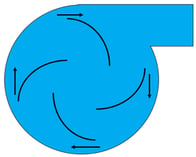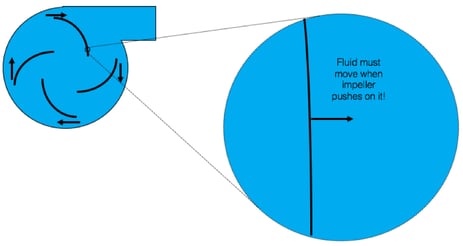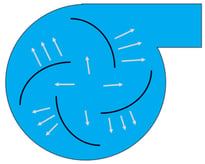This is the second blog post in our four-part educational series about pumps and irrigation pumping.
We’re building a knowledge base for energy and water efficiency in the agricultural industry, in order to make the most of our energy and water resources. The first blog post laid the groundwork about the basics of fluids and fluid mechanics and provide a basic understanding of pumps and irrigation operations:Pumping 101: How Irrigation Pumps Move Water (Part 1 of 4)
However, in our last post we only covered pumps in terms of lifting against gravity. But since fluids always experience resistance as a change in pressure, any resistance the fluid encounters can be characterized the same way. That's typically referred to as lift.
Another important point to note is that other than being acted upon by gravity, fluids cannot be pulled. They can only be pushed. Everything that happens in a fluid distribution network takes place exactly and only because of this. So that brings us to: suction.
How does a centrifugal pump create suction?
1. Impeller surfaces rotate in indicated direction:

2. Impeller surfaces push on fluid:

3. As impeller surfaces push water away, local static equilibrium is broken, and the water in the center pushes its way in the intake. The water is expelled from the discharge end:

Pumps in Context: System Considerations
It's helpful to think about a pumping system as a simple electrical system, in which there’s a power source connected to resistances. From a flow and power perspective, all the various complex things happening in a fluid distribution network can be generalized the same way. Pipe friction, for example, is analogous to electrical resistance.
- Irrigation pumps must lift the water out of the ground, and against pipe friction, to ingest it (R1) - Intake
- The pump must then push against the pipe friction and fouling friction of the distribution network to get water out of the lines (R2) - Discharge
- Total head required is the sum of all of this resistance, whether it is due to vertical lift or friction

For our next tutorial, we'll cover Anatomy of Pumps: Centrifugal Pump Parts (Part 3 of 4).
- For more information about how Wexus' IoT software can drive energy and water efficiency, automation and cost savings for your farming operation, check out our home page here where you can schedule a demo of our software platform or sign up for a free proposal.
- And be sure to follow us for the latest updates and news on Twitter, LinkedIn and YouTube.
